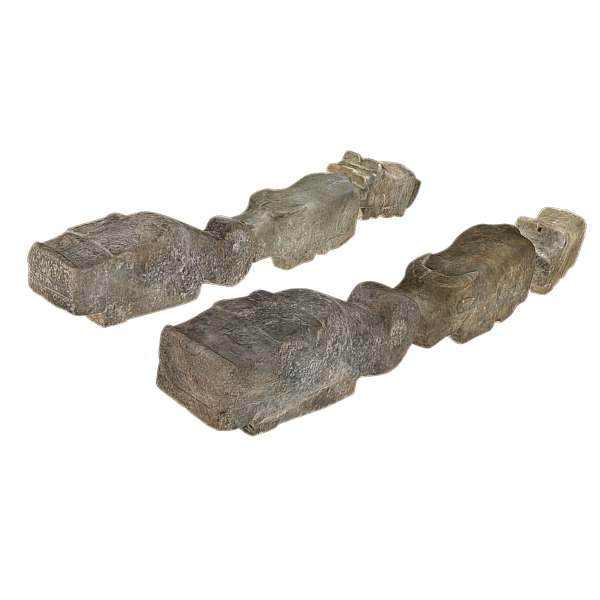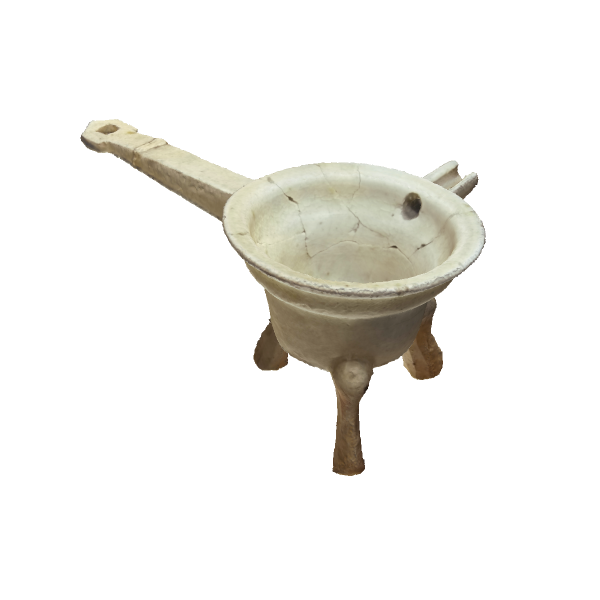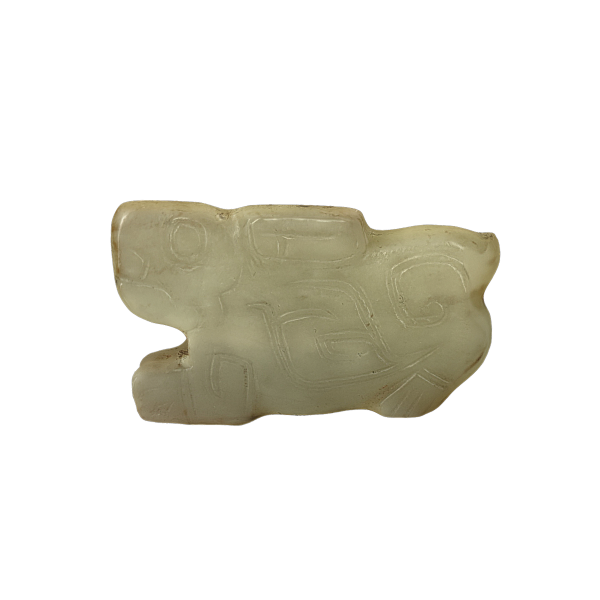Bo-bell with Stylized Hui Patterns (Part of a Bianbo Bell Set)
| Accession No. | R020036 |
|---|---|
| Period | Eastern Chou |
| Material | Bronze |
| Findspot | Tomb No. 01 Shan-piao-chen Site |
| Geographic Location | Shanpiao Town, Weihui City, Henan Province, China |
| Dimension | H. 12.75 cm; Diam. of rim 8.2 cm |
Description
This bo-bell was found at Shanbiao Town Tomb M1, Weihui City, Henan Province and is part of a nine-piece bianbo bells set. This musical instrument is categorized as a Significant Antiquities of the nation as it is an important piece for understanding the Zhou system of rites and music associated with the burials. Bo-bells are bigger variations of the zhong-bells; they were often used to compliment drums to make base rhythms. Bo-bells appeared in the south during the late Shang and were initially designed as a single-piece instrument. Later, from Western Zhou to the early Spring and Autumn period, bo-bells were integrated into the Zhou system of music as a three-piece set. Basic components of a bo-bell include the wu at the top, mei raised bosses on the body, zhuan decorative bands that alternate with mei, and gu the striking area at the bottom. The niu handle is in the form of two opposing dragons that look back on their coiled tails, with a peaked cord-marked loop for hanging. The bo-bell is level at both the top and the base, is wide lipped and has 36 coiled kui-dragon formed bosses spread across the body on both sides. There are four arc-shaped marks on the inner walls with an unknown function. The flat top of the bell, the body, and the striking area are encircled with stylized hui patterns; the artistic composition of the patterns on the striking area resemble animal-mask patterns. The musical instrument is thick and heavy with reddish-brown rusts on the inside. It was cast with the piece-mold technique and the original tune of the piece still lasts.


